Among the films that John Jones made, appeared in, or helped to bring about are the following:
Arts Council of Great Britain, 1953
Directed by John Read
A young John Jones appears in this short film directed by John Read, who was the BBC’s Fine Art documentary specialist for 40 years. The camera follows Jones as he walks through the Slade School of Art, meeting such established artists as Reg Butler, Patrick Heron and John Piper.
Art historian Basil Taylor presents the film and interviews several of its subjects. This is the first of many films sponsored by the Arts Council – in this case co-producing with the BBC.
Matisse, Henri, 1869-1954
Directed by John Jones and Lawrence Gowing, 1972.
Arts Council of Great Britain; Films Incorporated
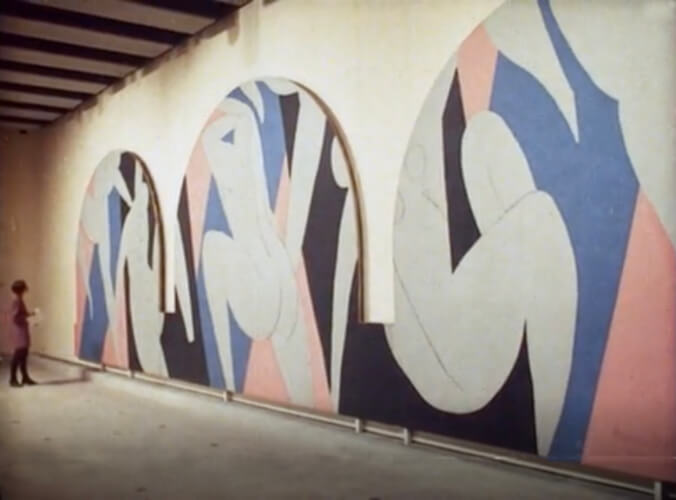
A close look at the paintings of Henri Matisse from the beginning of his career, and revealing the development of his use of colour from oils to cut-outs.
The soundtrack is music by Erik Satie.
Quotations from Henri Matisse are read by John Jones.
(26 mins, 37 secs)
John Jones, New York, 1965/66
Shown at Tate Modern 2021-2024 as part of Yayoi Kusama: Infinity Mirror Rooms.
Description from the Tate:
“This film shows Kusama in her New York studio in the mid-1960s. She is surrounded by the soft sculptures and collages she was making at the time. Faces cut from magazines become a polka dot environment. She uses domestic objects, including furniture and mirrors, even pasta. Making these familiar things strange or unsettling, Kusama’s approach is akin to surrealist artists working earlier in the century. The artist, filmmaker and lecturer John Jones made this film. He interviewed and filmed over one hundred US and UK-based artists in the 1960s. This unique archive, which Jones used in his lectures, is in the Tate Library & Archive collection.”
Over the early summer of 1971 John Jones spent time at Hardisty’s Farm in Denton on the edge of the Yorkshire moors.
He shot a film about the life and work of painter Kate Barnard in the months before the opening of her show at the Serpentine Gallery in London.
Music composed by Edward Cowie.
Owned by Kate Westbrook (formerly Barnard)
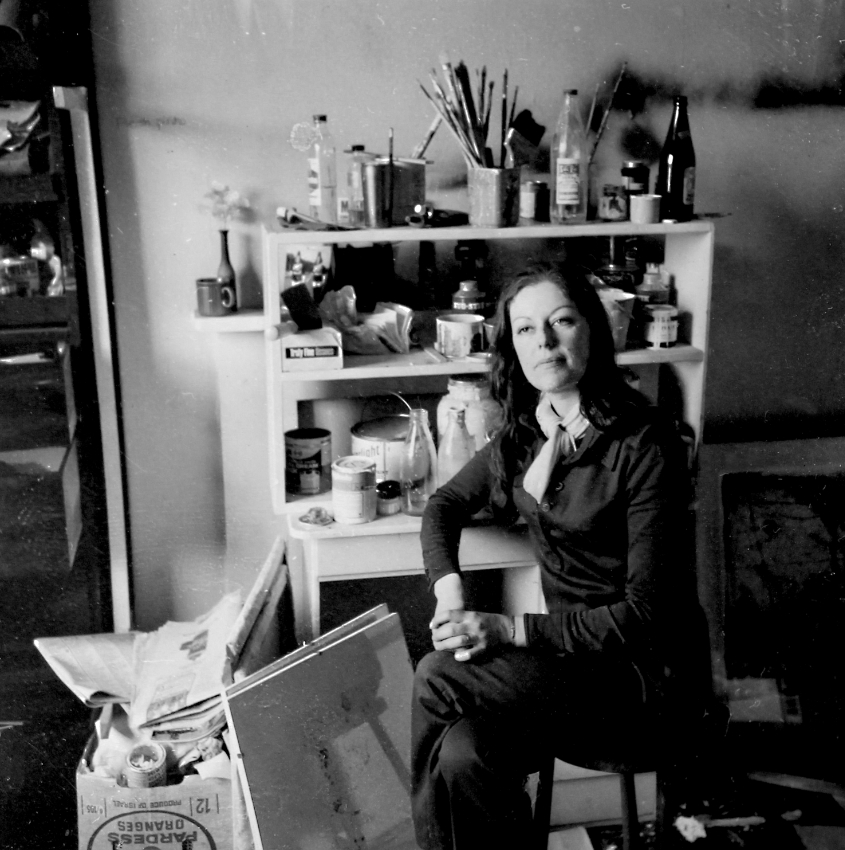
John Jones with Harry Thubron 1963
16mm black-and-white film.
“Over New Year 1963, a ten-day course was held in the premises of Byam Shaw Art School in London to look into the problems raised by figure drawing. It was felt that in the context of present day artistic preoccupations, the traditional life-room habits in art schools had become somewhat anachronistic. The staff: Hubert Dalwood, Terry Frost, Maurice de Saumurez and Harry Thubron, all felt that the study of the figure needed to be approached freshly if it was to continue to be one of the richer and more rewarding of the artist’s concerns.
“The first step in this experiment was to change the traditional ‘life-class’ situation. To do this several models were employed at once and were not posed in the usual way but at the outset were instructed to move about at random in the room. The students worked on large pieces of paper on the floor. The models walked over and among them, creating what Harry Thubron called ‘a Turkish bath atmosphere mixed’. Into this Turkish bath I took the camera.”
– John Jones (from a longer talk on how this film was made)
Film in The National Arts Education Archive (accompanied by two audio cassettes of conversation between Harry Thubron, Tom Hollins and John Jones)

Rough note on an envelope for title shot of ‘Drawing with the Figure’.
“Once the climate of the times was against the kind of education I’d had, there was less emphasis on looking and more on making. I was interested in the ideas of Harry Thubron and close to the artists he gathered around him, and I was glad to be in Leeds where it was all happening. I worked with him a little and made films of his experiments and introduced my students to his Bauhaus-based courses. If students hadn’t the time to do what my generation had done I had to devise other things for them, practical things as opposed to theory because I think you get the best understanding of art through doing it. I had misgivings from time to time, though I was never really at odds with the spirit of Harry’s revolution.”
– John Jones
Note: among Harry Thubron’s students were Bridget Riley, David Hockney and Stass Paraskos.
Filmed by John Jones in Oldenburg’s studio, New York, 1965-1966. 16 mm, colour
Oldenburg constructing a polyurethane relief of the Chrysler Airflow automobile.
Filmed by John Jones in New York, 1966. 16 mm, b/w
Based on an exercise Jones set his film students: to shoot everything they actually looked at during a task, not just what they thought they looked at. See p66 of The American Art Tapes for more detail.
Filmed by John Jones in New York, 1966. 16 mm, b/w, silent, 12 min
A film of Oldenburg’s plumber cutting his own beard.
All three Oldenburg films are now in the archive of the Museum of Modern Art in New York
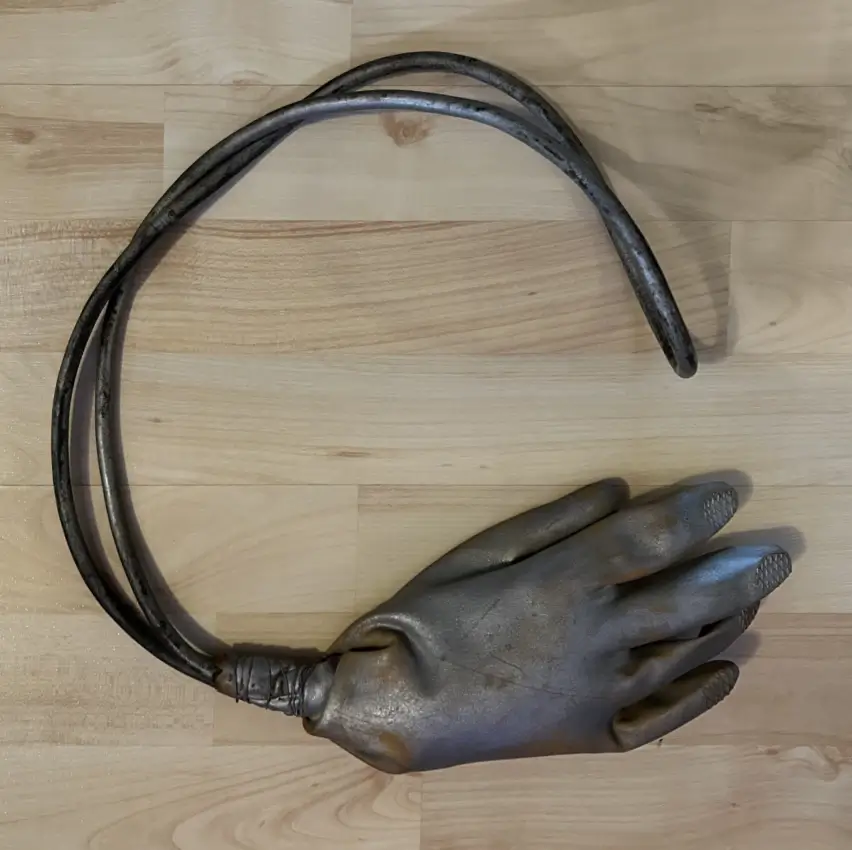
‘Stethoscope’ used by John Jones playing the doctor in the house in Claes Oldenburg’s happening, Moviehouse, 1965
John Jones 1966
A fifteen-minute ‘film for children’ made in Greenwich Village in 1966. It involves a theft, a chase across a rooftop, forgiveness and a feast of ice cream.
Cast: Roz Kramer, Thom Nolan, Debbie Allee, Laurel Werner, Gaby and John Jones, and Rachel and Nicolette.
The soundtrack, years before Woody Allen’s Manhattan, is Gershwin’s ‘Rhapsody in Blue’.
Owned by Jones’s family
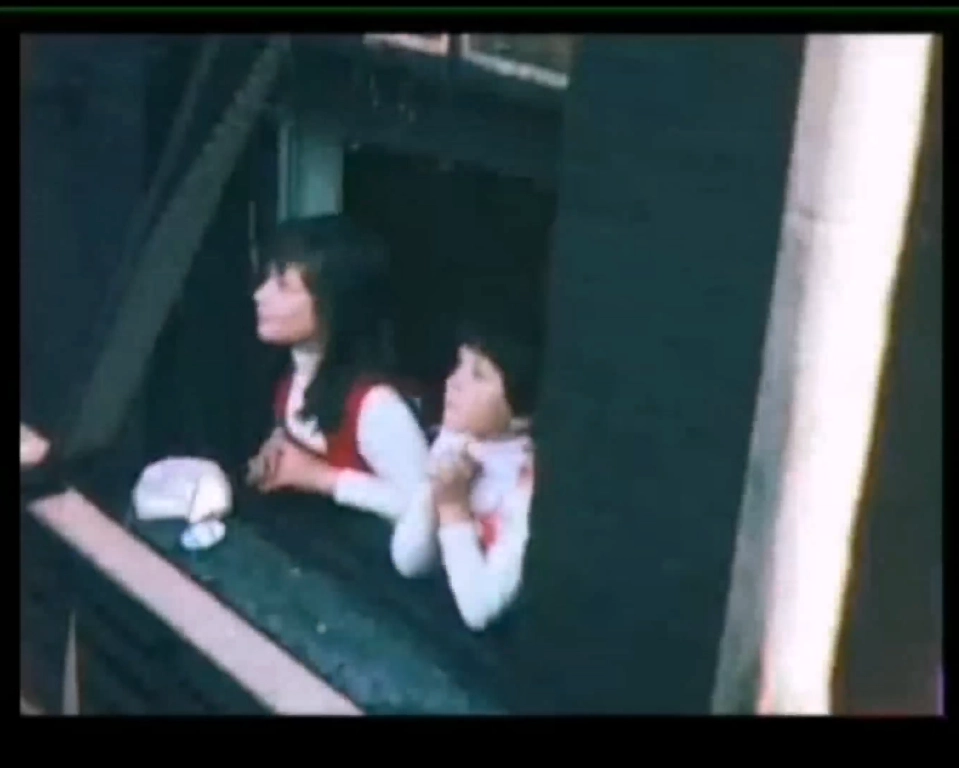
Director: John Jones. Cameraman: Barry Herbert
In Trinity Term 1983 John Jones made a short promotional film about St Hilda ‘s College.
The master copy was lost but a lower quality copy is in the Living History archive of St Hilda’s
A short spoof cowboy movie shot at Brimham Rocks with ‘Nibs’ and Carol Dalwood, and John and Gaby Jones.
Now in the Hubert Dalwood collection at the NewArtCentre at Roche Court, Fareham
A fairy tale shot in the Villa Igiea Hotel, Palermo, Sicily with family, including Gaby’s relations. In which a princess is locked in a tower by a witch and her servant, and rescued by a passing minstrel.
Jones’s home movies often had a narrative. See also The Pink Purse.
Owned by Jones’s family
1965 Directed by John Boorman. Script by Peter Nichols.
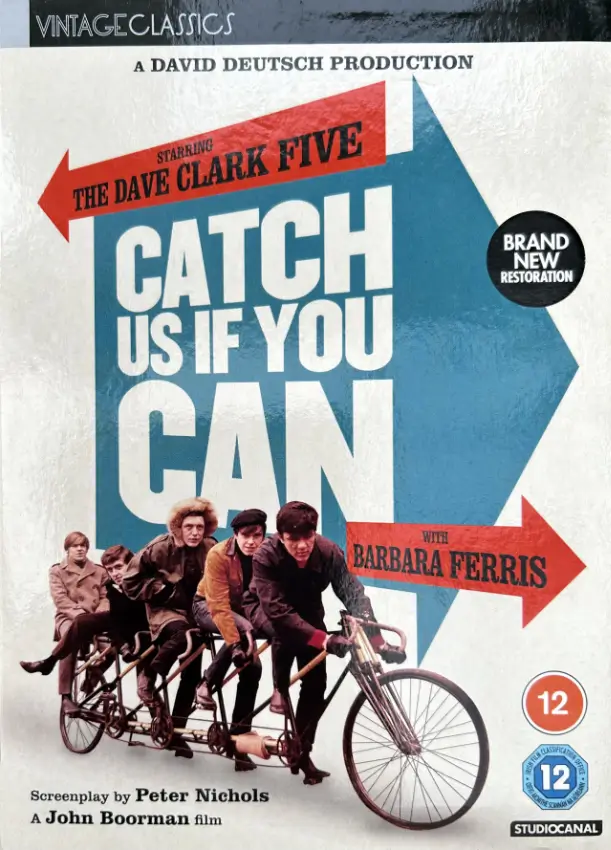
In this vehicle for the Dave Clark Five pop group, John Jones has a tiny cameo, dressed as Toulouse-Lautrec and talking in a Bristol accent, at a fancy-dress Arts Ball in the Roman Baths in Bath. The playwright Peter Nichols who wrote the script was Jones’s friend. It was John Boorman’s feature film debut, released in the US as Having a Wild Weekend. John Jones is named in the credits, and listed on IMDb as ‘Drinker’.
At the Magic Lantern Society Autumn meeting in Birmingham in 2018 Carol Owens presents her film Marion at Bamforth’s, made in 1978 from an idea by her Leeds University tutor John Jones.
The story of Marion Barrowclough, then Marion Leek, who was a child photographic model for Bamforth’s magic lantern slide studio in Holmfirth, Yorkshire.
‘Underneath the Lamplight’s Glitter’ and ‘Daddy’ sung by Margaret Gregory. ‘Father, Dear Father’ sung by Carol Gregory
Film and presentation copyright Carol Owens nee Gregory
Yoko Ono 1966-67
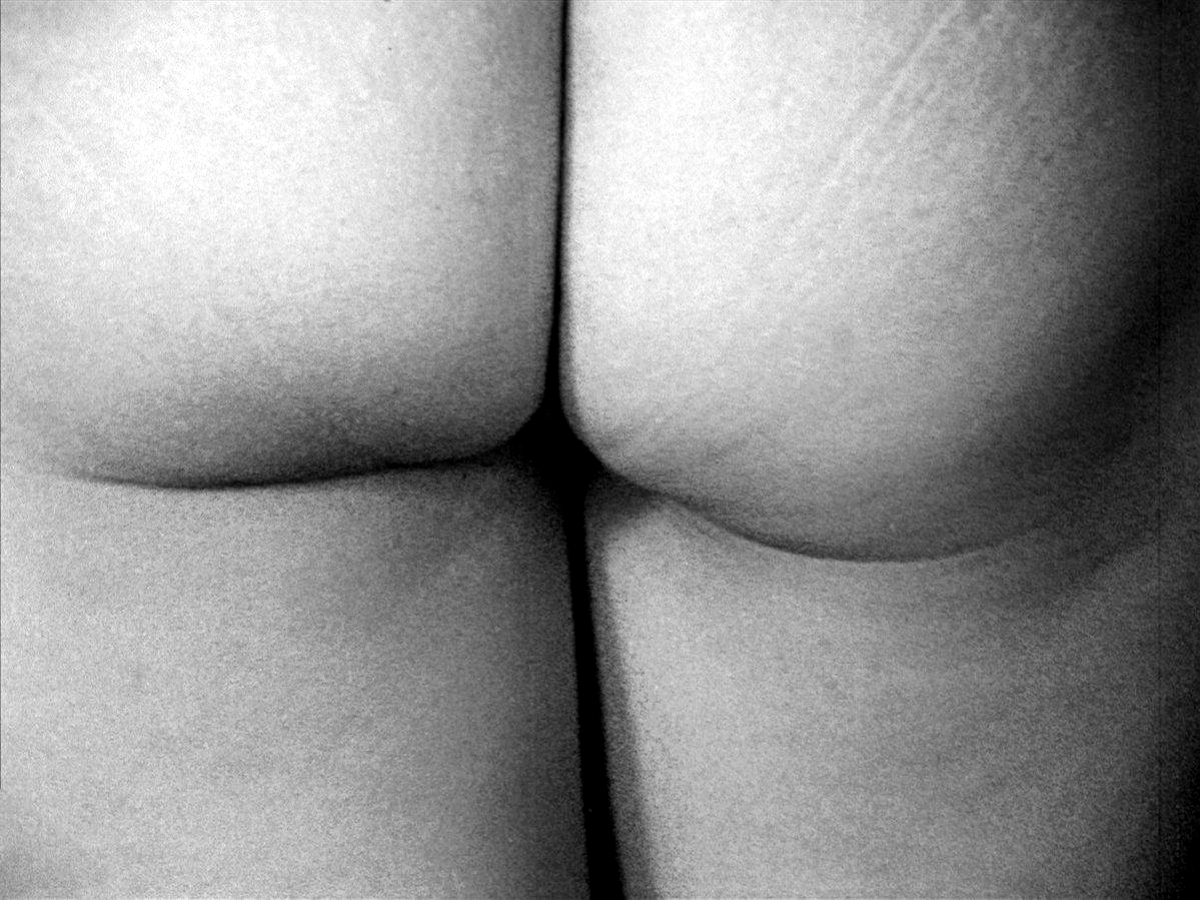
© Yoko Ono
‘Yoko was planning a film and needed some cash to start it. I lent her £50. My contribution was acknowledged in the titles of that underground masterpiece Bottoms in which 100 people’s behinds are filmed, each for 20 seconds as they walked on an endless belt. The cinema screen was divided by a wobbly cross of shadow into four areas of softly undulating flesh. No two actors’ performances were the same. The variety of forms of the human hindquarters has to be seen to be appreciated. The film has everything: a riveting theme with a hundred variations, formal consistency, human interest and a laugh a minute.’
– John Jones
(To read the rest of John Jones’s account of his dealings with Yoko, see Words/Meeting Yoko Ono.)
All content is copyrighted by the estate of John Edward Jones. | Privacy Policy | enquiries@johnedwardjones.co.uk